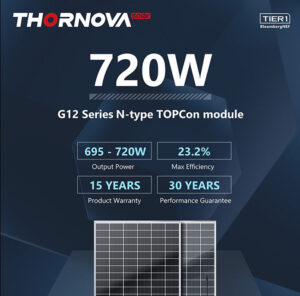- Accurate modeling of irradiance is vital for predicting energy yield in bifacial PV systems
- 2D view-factor and 3D ray-tracing are the primary methods for predicting irradiance on module fronts and backs
- Widely used software like MoBiDiG, SAM, and PVSyst rely on view-factor modeling, while ray-tracing methods are employed by SunSolve and others.
Irradiance is the most critical element when modeling a bifacial PV system. These models are essentially key components of the yield simulation software suites. Accurate energy yield predictions for bifacial PV systems are key to securing project financing, as the irradiance striking the module’s rear side is more complex to determine. The front-side correlated variables – such as site location, ground albedo and mounting system design – are not sufficient to simulate the energy yield of a bifacial system (See Maximizing Solar Power Efficiency).
The estimation of the rear side irradiance depends on more factors, including shading of the mounting structure, junction boxes, and neighboring modules. Furthermore, energy yield prediction for bifacial PV modules on tracking devices are more challenging than for fix-tilted applications as the orientation and thus the shading conditions are permanently changing. In addition, as mentioned above, the accuracy of the wavelength-dependent albedo values is more important, as the albedo changes with soil content, type of soil, water content, snow and vegetation cover. There are 2 methods to predict the incident irradiance of the module’s front and back sides using an irradiance model – 2-dimensional (2D) and 3-dimensional (3D). The 2D method is called view factor, and the 3D method is called ray-tracing. These irradiance models are also the basis for various yield simulation software that are in use (see Inverters For Bifacial Solar Panels).
View-factor model
According to the view-factor model, the ground beneath the module is divided into 2 sections: the shaded part reflects only diffuse radiation and the unshaded part reflects direct and diffuse radiation. Due to the motion of the sun, the position and the shape of the shadow change is time-dependent and changes daily and seasonally. That means the radiation in homogeneity caused by the module frame, mounting structure and albedo’s wavelength and time-dependence cannot be taken into consideration. Thus, the optimization of a PV plant design for different mounting structures cannot be straightforwardly evaluated with a 2D view factor yield prediction software program. The view factor model is mainly used by MoBiDiG from ISCKonstanz, System Advisor Model (SAM) from NREL, BIGEYE from TNO, SolarFarmer from DNV, and PVSyst, which makes it the most established and widely used.
Ray-tracing method
The ray-tracing method makes use of 3D simulation software, which traces the path of the light by taking into account its encounters with obstacles. It provides a precise and realistic rendering of the PVsystem and the radiation map. This method is more accurate and suitable for complicated geometries. Ray-tracing simulations have the potential to explore the effects of detailed module and PV system features, such as the spacing between cells and mounting structure design, which cannot be easily addressed with a view-factor model. Especially in the case of tracking system optimization, a dynamic shed scenario is needed. The downside is that processing time and complexity increases for the ray-tracing method. SunSolve from PV Lighthouse, NREL, EDF R&D and Fraunhofer ISE use this method. On top, there are models that combine both view-factor and ray-tracing such as BifacialSimu and pvlib.
The text is an excerpt from the TaiyangNews Bifacial Solar Systems 2024 Report, which can be downloaded for free here.



